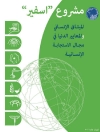สารบัญ
Frontmatter — General Editor’s Preface — Foreword — Table of Contents — Introduction — Visual Anthropology in a Discipline of Words — Ethnographic Filming and the Cinema — The History of Ethnographic Film — Mc Carty’s Law and How to Break It — Cinematic Social Inquiry — The Camera and Man — Documenting the Human Condition — Beyond Observational Cinema — Ethnographie Film Documents — Idea and Event in Urban Film — Ethnographie Observation and the Super-8 Millimeter Camera — Research Filming of Naturally Occurring Phenomena: Basic Strategies — Visual Anthropology and the Past — Ethnographic Film and History — Some Methods of Ethnographic Filming — Reconstructing Cultures on Film — The Role of Film in Archaeology — Specialized Uses of Film and Videotape — Photography and Visual Anthropology — Feature Films as Cultural Documents — Videotape: New Techniques of Observation and Analysis in Anthropology — The Film Elicitation Technique — Audiovisual Tools for the Analysis of Culture Style — Analysis of Body Movement and Space — Filming Body Behavior — A Photographic Method for the Recording and Evaluation of Cross-Cultural Proxemic Interaction Patterns — Proxemic Research: A Check on the Validity of its Techniques — The Presentation of Anthropological Information — Educational Uses of Videotape — Using Film in Teaching Anthropology: One Pedagogical Approach — The Use of Television in Teaching Anthropology — Research Films and the Communications Revolution — Mass Communication Meets the Anthropologist: A Short Manual of Some Unprimitive Thought — Anthropological Programming in Japanese Television — The Future of Visual Anthropology — The Tribal Terror of Self-Awareness — Visual Records, Human Knowledge, and the Future — Conclusion — Appendices — Resolution on Visual Anthropology — Filmography — Biographical Notes — Index of Films — Index of Names — Index of Subjects












